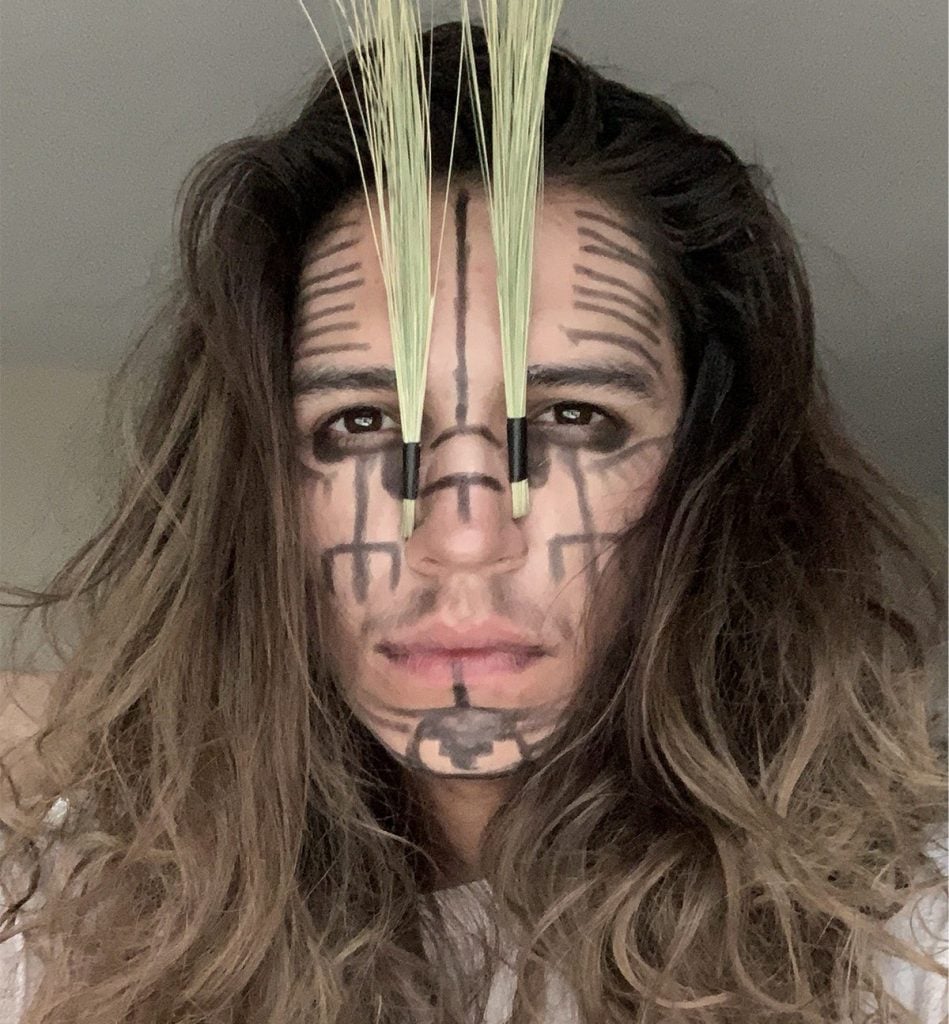Last November, the artist Eric-Paul Riege was in the middle of a five-hour durational performance at UCLA’s Hammer Museum when the unexpected happened—he fell and broke his ankle.
“When you perform, your mind goes to different places,” said Riege in a video interview conducted from his home studio in Gallup, New Mexico. “But when I fell, I had to focus on my body.” He’d never broken a bone before and it took him 20 minutes to realize that he’d have to cut the performance short and seek treatment.
The experience left Riege, a fiber artist whose work bridges sculpture and performance, more curious than upset: “When you think about weaving and fiber and it is in its amorphous stage, it is so delicate and soft. But then when you weave it together, it becomes so strong, which is, in a lot of ways, similar to how our bodies work—to the weave of our skin and bone and muscle.”
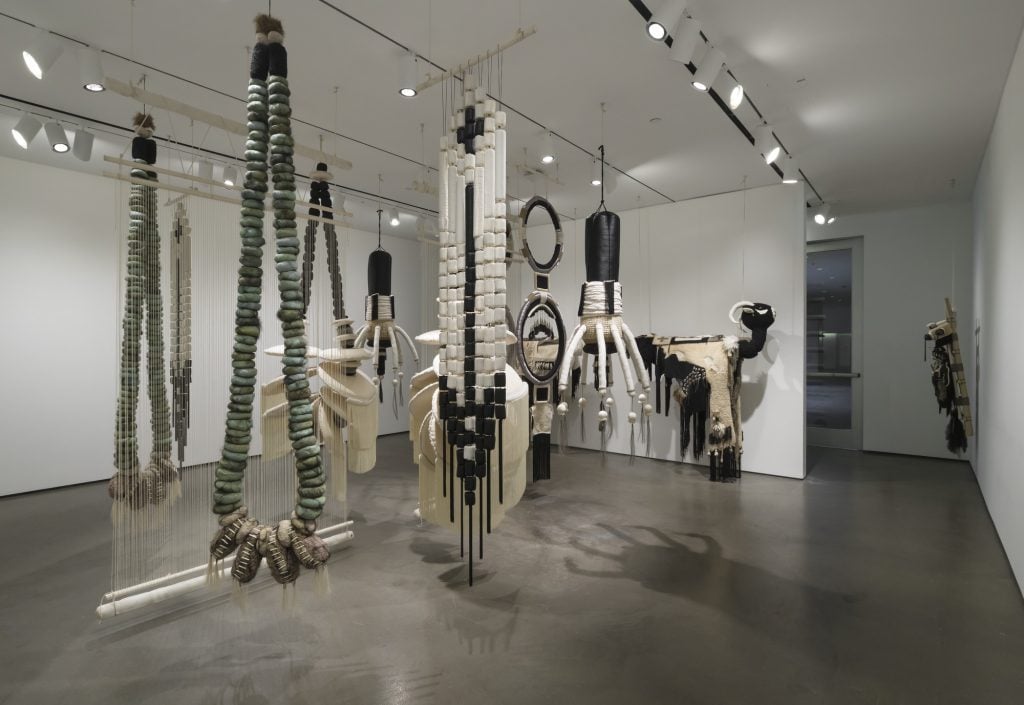
Installation view of “Hammer Projects: Eric-Paul Riege,” Hammer Museum, Los Angeles. Photo: Jeff McLane.
On February 18, Riege will perform again at the Hammer Museum, this time with a renewed perspective on the demands of his practice. Said Riege: “The relationship between my work and the effects it has on my body is profound—when you perform for so long, it starts to leave marks.”
Riege’s performance coincides with the conclusion of his solo exhibition at Hammer Projects, “Hólǫ́llUllUHIbI [duet],” which features a series of 10-feet tall hanging soft sculptures that Riege refers to as his “earrings.”
The exhibition’s name is drawn from the Diné word “Hólǫ́,” a ceremony which recognizes the first time a child laughs, and the word “lullaby,” written the way Navajo words are spelt in English. Each piece is built out of modular fiber “beads” that the artist sews and then arranges into sculptures that hang at slightly greater than human scale.
To view Riege’s art is not so much to observe it as to navigate it. The artist said he hopes his work can “exist as a kind of forest, the objects acting like trees that are swaying.” A soundtrack, drawn from Riege’s performance interacting with his sculptures, accompanies the exhibition.
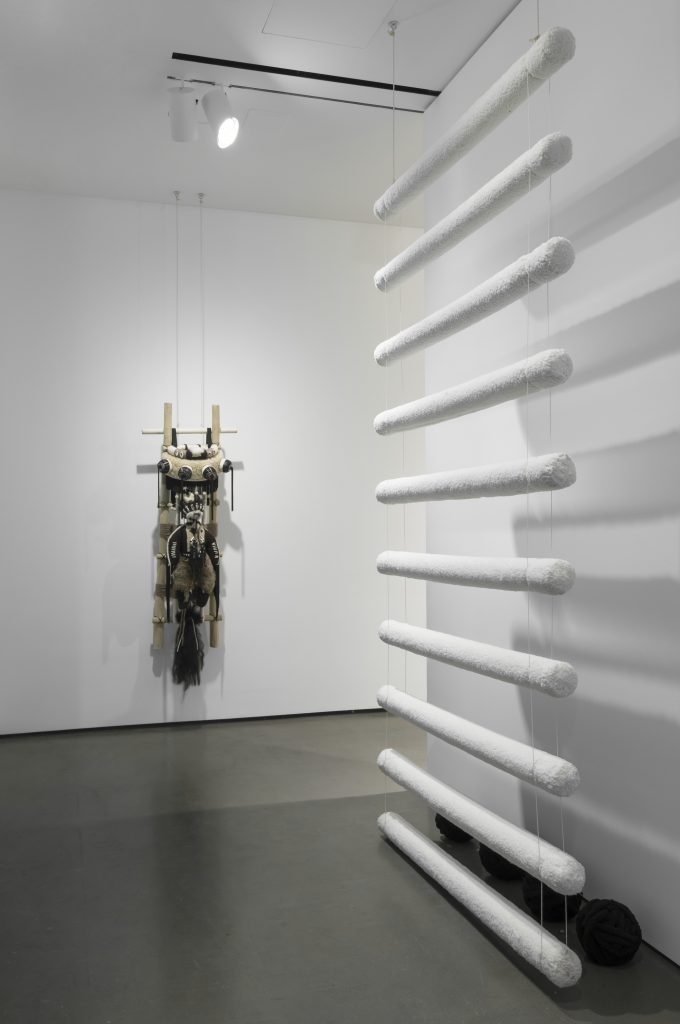
Installation view of “Hammer Projects: Eric-Paul Riege,” Hammer Museum, Los Angeles. Photo: Jeff McLane.
Riege grew up and still works in his hometown of Gallup, or Naʼnízhoozhí. His work is influenced by his Navajo heritage and by the ways that indigenous identity manifests, both authentically and inauthentically, in material culture.
“I am interested in the way indigenous art is represented in museums and in places in Gallup like pawn and trade shops,” said Riege. “The way it can exist in a drawer in an archive in a basement somewhere, but that a weaving comb is also a live tool… there are so many ideas around what is real and what is fake, what is performed and what is not, the way we curate our identities online, the way we represent ourselves. So my work is having these conversations with the audience in mind and with the performance in mind. It is a playground for me.”

Eric-Paul Riege, Naabeehó Bináhásdzo Bidah Naat’a’í [Navajo Nation flag] (2017). Courtesy of the artist.
“A professor told me that ecology is the science of connection, and it made me question: Why should I use these materials and what connection do these materials have to the spaces I inhabit? Where do they come from, how does it reflect contemporary society and the land they are coming from?” he said. “All of these things exploded my mind and the way I learned about my relationship with making.”
The idea to make modular sculptures began in his dorm room, where he worked in a small space and with a range of materials—from cheap muslins and plastic hair from the mall, to wool he spun himself and his own hair. Since graduating in 2017, Riege’s performance practice has developed alongside the sculptural work, investigating ways of interacting with his work and extending it into the world.
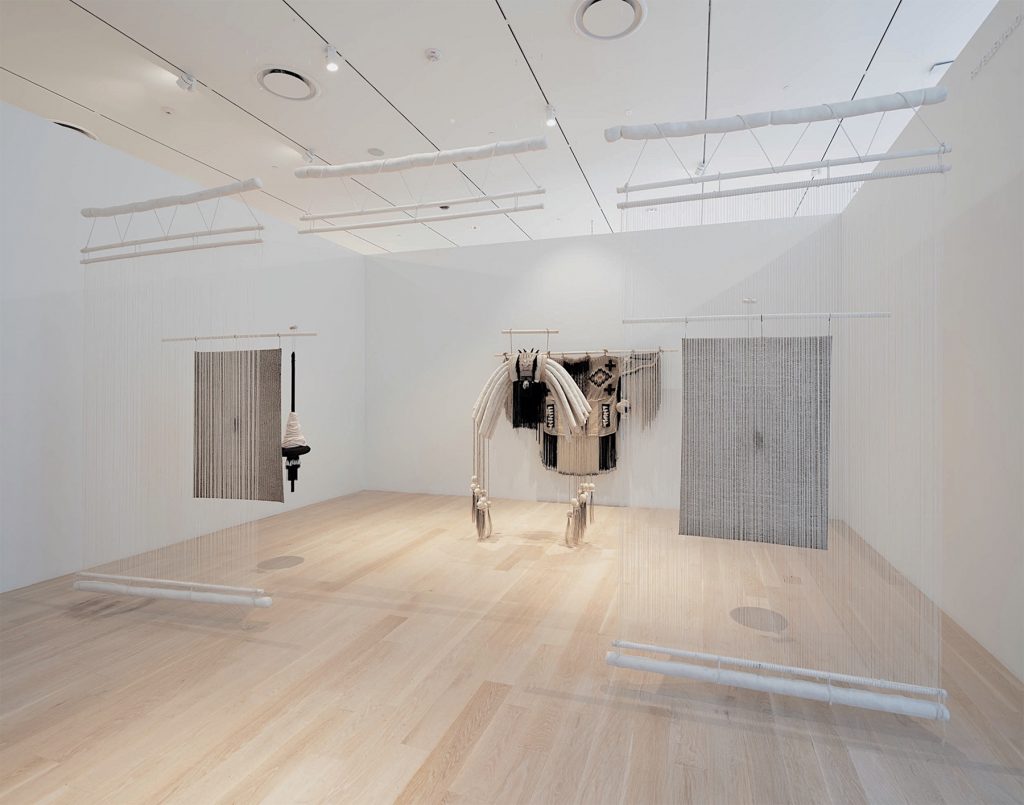
Eric-Paul Riege, Hólǫ́—it xistz (2019). Photo: Fredrik Nilsen Studio, courtesy of ICA Miami.
In recent years, Riege’s work has also reached an ever-widening audience. Following his first solo museum presentation at the Institute of Contemporary Art, Miami in 2019, he has shown work and performed at venues from the Navajo Nation Museum in Tségháhoodzání (Window Rock, AZ) to the National Hispanic Cultural Center in Albuquerque, New Mexico.
Christopher Schwartz, who runs Stars Gallery in Los Angeles, which represents Riege, said of the artist: “I love how he plays with performance and display to interrogate traditional notions of the art object—although he’s utilizing techniques that have been passed down through many generations, he’s creating artworks and ideas that are decidedly individual and contemporary.”
Connie Butler, who curated Riege’s show at the Hammer, echoed that sentiment, describing Riege as “a next-generation Native artist who honors and reinvents tradition in a way that addresses fluid identity, gender, and formal issues of sculpture.”
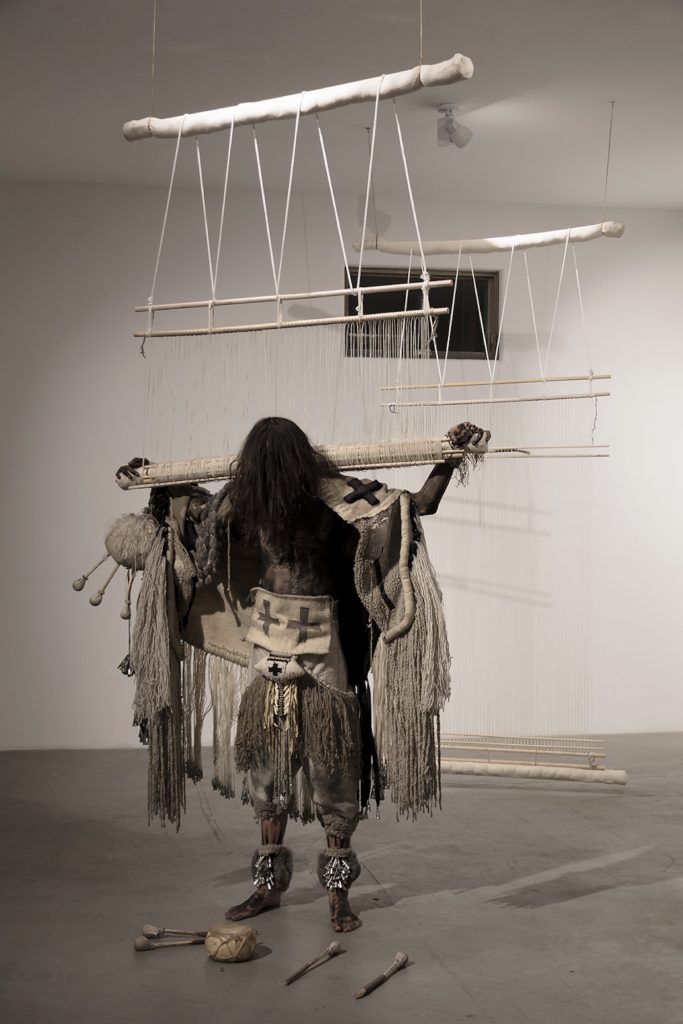
Eric-Paul Riege, dah ‘iistl’o ́ [loomz], weaving dance (fig.1) (2018), Sanitary Tortilla Factory, Albuquerque, NM. Photo: Rapheal Begay, courtesy of artist
Riege’s sculptures, which currently sell for between
$10,000 and $50,000, now sit in the collections of the Denver Art Museum, Forge Project in New York, Tia Collection in Santa Fe, the Institute of Contemporary Art, Miami, and the Montclair Art Museum.
But even as Riege’s work is displayed and collected, he maintains an active relationship with each piece.
“I don’t consider anything I do ever finished, even when it is static,” he said. “I have sold a few pieces in the past where now they live in a collection, but I mentioned to the people who are interested that at some point in my life, I will want to activate this object again, and it might change. I’ve been lucky enough to work with people who have taken that into consideration.”
“Hólǫ́llUllUHIbI [duet]” is on view at the Hammer Museum, 10899 Wilshire Blvd., Los Angeles, through February 19, 2023.
